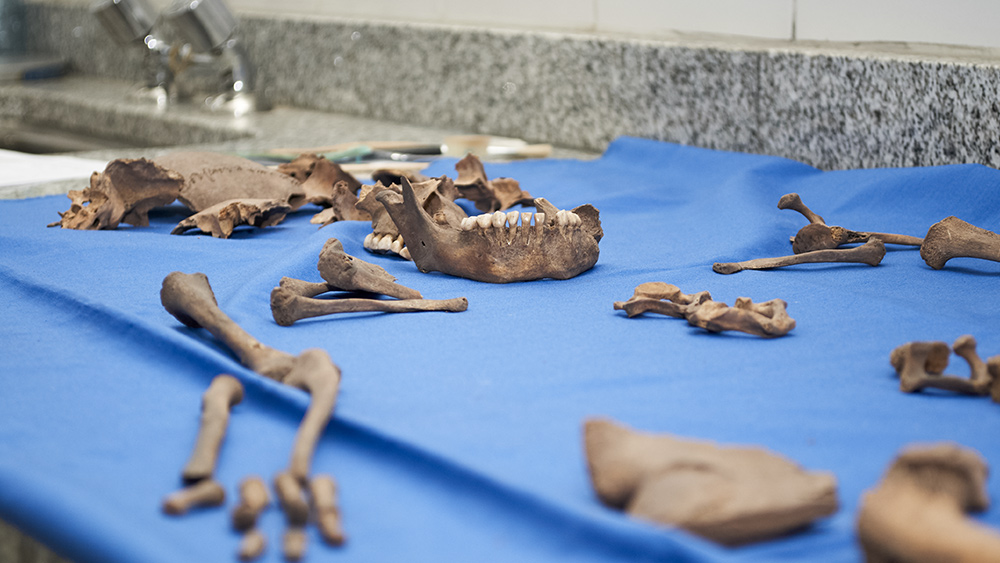
Contrary to what most people might think, the human skull — the bone structure that supports the face and forms a protective cavity for the brain — is actually composed of many bones rather than one -- 22 bones, to be precise.
These bones, which are connected together by fibrous structures known as “cranial sutures,” harden and fuse together as an individual ages to effectively protect the brain. And because they only fully do so in adulthood, these bones essentially permit brain growth during adolescence.
But if you think 22 cranial bones are too many, then you're in for a surprise: According to experts, some animals, which are considerably smaller in size, have even more skull bones than humans.
Why some animals need more bones in their skulls
One example of an animal with numerous skull bones is the fish.
Fish generally have the most number of bones in their heads — a feature exemplified by an extinct species of fish that possessed 156 cranial bones in total.
Brian Sidlauskas, an associate professor and the curator of fishes at Oregon State University, noted in an email interview with LiveScience that while the number of cranial bones varies per species, fish usually have an average of 130 or so bones in their heads.
Having numerous skull bones is typical of creatures who exhibit cranial kinesis, a term that refers to the significant movement of skull bones relative to each other in addition to movement at the joint between the upper and lower jaws.
Cranial kinesis, according to experts, is present in a wide variety of animals, such as reptiles, birds and fish.
As detailed in several studies, cranial kinesis is thought to have evolved as a way to optimize the feeding habits of animals, with researchers noting that the ability essentially reflects how the skull is used by specific animals. (Related: Cool survival technique: Shrew skulls shrink during winter to reduce food requirements, then regrow in spring, according to new research.)
For example, animals such as snakes that swallow large prey whole, birds that have to grip awkwardly-shaped food items, or fish that feed via suction, often have kinetic skulls with numerous mobile joints. Conversely, animals that possess a secondary palate, such as the majority of mammals — including humans — often have akinetic skulls.
"To maintain that movement within the skull, something we call cranial kinesis, you need a whole bunch of bones," Larry Witmer, a professor of anatomy and paleontology at Ohio University, said.
In his interview, Witmer also noted that some species of fish even take cranial kinesis to the extreme by developing multiple sets of jaws. Aside from feeding behavior, another angle that scientists are looking at to explain the development of cranial kinesis is ancestry.
According to Paolo Viscardi, curator of zoology at the Natural Museum of Ireland, this is, again, more evident in fish, whose skulls are allegedly more variable compared to other vertebrates.
"The skull itself is more variable in fish than other vertebrates — unsurprising when you consider that all other vertebrates are derived from a single lineage of fish, so there would have been a bottleneck in cranial diversity at that point," Viscardi said.
Viscardi, in an interview with LiveScience, also said that unlike terrestrial vertebrates, fish do not have to deal with gravity, thus their bones tend to be lighter and more flexible than the bones of some of their terrestrial counterparts.
Aside from fish, birds also have highly flexible craniums and display increased mobility. According to a study published in the journal PNAS, these features came about as a result of birds losing some of the bones their dinosaur ancestors once had. This evolution of cranial kinesis allowed birds to diversify into a wider array of ecological niches.
Interested in more weird but real science facts? Visit WeirdScienceNews.com.
Sources include:
Please contact us for more information.





















